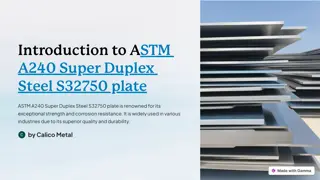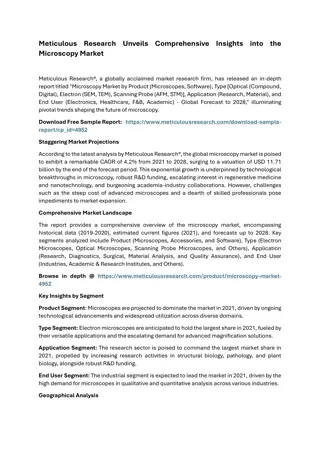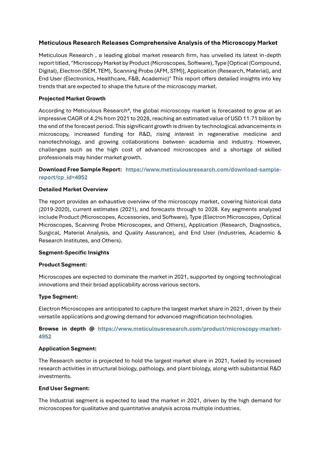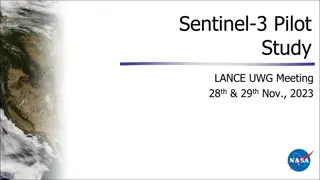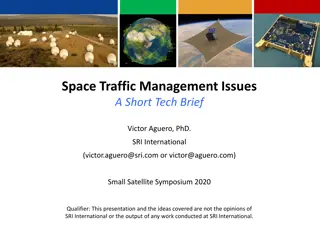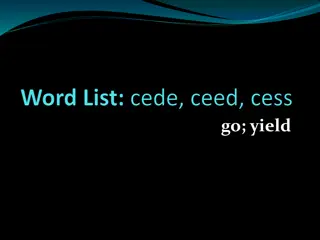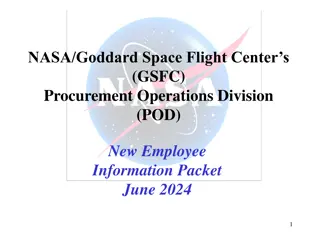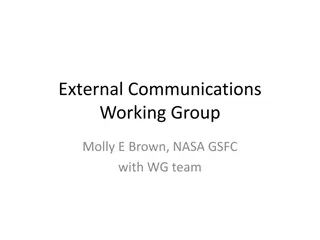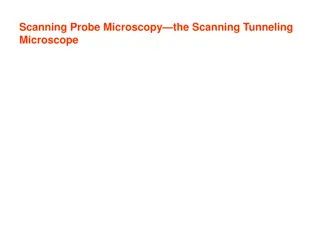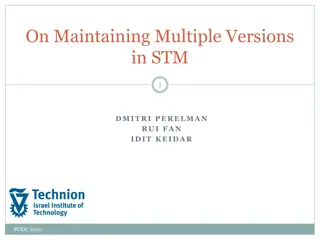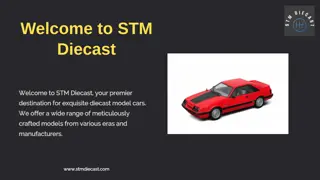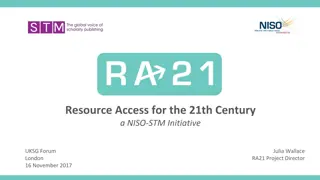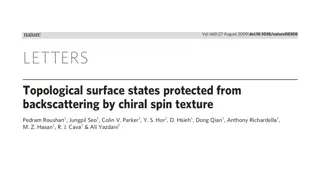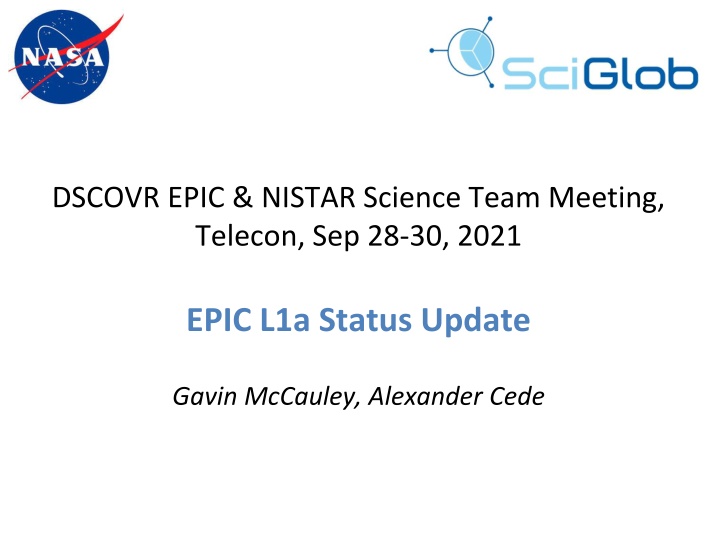
DSCOVR EPIC NISTAR Science Team Meeting Updates 2021
Stay updated on the latest developments from the DSCOVR EPIC NISTAR Science Team Meeting held from Sep 28-30, 2021. Learn about the L1a processing steps, updates, and processor input changes. Discover the progress made in calibrations and corrections for EPIC data processing. Access valuable resources and insights from the Frontiers paper published as part of the collaboration. Don't miss the essential details discussed during the telecon presentation.
Download Presentation

Please find below an Image/Link to download the presentation.
The content on the website is provided AS IS for your information and personal use only. It may not be sold, licensed, or shared on other websites without obtaining consent from the author. If you encounter any issues during the download, it is possible that the publisher has removed the file from their server.
You are allowed to download the files provided on this website for personal or commercial use, subject to the condition that they are used lawfully. All files are the property of their respective owners.
The content on the website is provided AS IS for your information and personal use only. It may not be sold, licensed, or shared on other websites without obtaining consent from the author.
E N D
Presentation Transcript
DSCOVR EPIC & NISTAR Science Team Meeting, Telecon, Sep 28-30, 2021 EPIC L1a Status Update Gavin McCauley, Alexander Cede
L1a Processing Steps L1a Update DSCOVR EPIC & NISTAR Science Team Meeting GSFC, 28-30 September 2021 Unbolded steps have not changed since last year. The CCD detector remains healthy as evidenced by nominal dark counts, dark bias, and read noise trends as well as stable levels of saturated and enhanced pixels. In this vein, no news is good news . This talk does not go over these nominal updates further. Bolded steps have had processor updates, whilst monitoring and maintaining the dark correction and detector performance. Processing step Dark correction Enhanced pixel detection Read wave correction Latency correction Non-linearity correction Temperature correction Conversion to count rates Flat fielding Stray light correction Conversion to radiances* * Not done by SciGlob Average impact Moderate Small Small Moderate Small Small Small Significant Significant Significant Affected pixels impact Extreme Large Small Significant Small Small Small Large Large Significant 2
L1a Update DSCOVR EPIC & NISTAR Science Team Meeting GSFC, 28-30 September 2021 Frontiers Paper As part of the Frontiers Remote Sensing collaboration with DSCOVR, we have published a paper on the L0 to L1a process in detail, Raw EPIC Data Calibration . This paper gives an overview of the mathematics and the pre- launch and on-orbit calibration behind each correction step, beyond the scope of this presentation. https://www.frontiersin.org/articles/10.3389/frsen.2021.702275/full 3
L1a Update DSCOVR EPIC & NISTAR Science Team Meeting GSFC, 28-30 September 2021 Frontiers Paper 4
L1a Update DSCOVR EPIC & NISTAR Science Team Meeting GSFC, 28-30 September 2021 L1a Processor Input Updates Submitted L1a processor version 18, as part of a series of revisions to eventually be incorporated into an official V04 on EPIC website (AVDC database) This is two internal versions since last year. (Official V03 uses SciGlob v13) v17 Flat field bugfix involving a rowshift bug The binning/unbinning process, taking a set of 2x2 pixel values and averaging them into one value (2K 1K resolution) or vice versa, had a subtle error that existed since launch, where the sets of 2x2 pixels taken were off by one row The dark trending analysis from last October was formally adopted see later slide for latest updates 5
L1a Update DSCOVR EPIC & NISTAR Science Team Meeting GSFC, 28-30 September 2021 L1a Processor Input Updates v18 Flat fields received a vignetting adjustment (pictured to the right) In investigating the appearance of some sparks (high-end outliers) in L2 products such as ozone, it was discovered that in the stray light correction process, enhanced and saturated pixels had values overwritten in the software. This bug was narrowed down and corrected (see next slide). 6
L1a Update DSCOVR EPIC & NISTAR Science Team Meeting GSFC, 28-30 September 2021 L1a Processor Input Updates 7
L1a Update Dark Trending Characterization DSCOVR EPIC & NISTAR Science Team Meeting GSFC, 28-30 September 2021 Measured dark anomaly (blue points) represents difference between in-flight darks and pre-launch dark characterization (CALFILE v12). Red data points are residuals between measured dark anomaly (blue) and CALFILE v18 fit. Previous versions of the dark rate map implemented in official V01 of the L1a differed from the weekly measured dark count exhibiting a seasonal cycle and drift (blue). Refinements to the characterization have improved the performance over time. The latest characterization pictured above, included as of SciGlob software version v17, captures the two (and upcoming third) most recent peaks (past the safehold period of 2019) particularly well, with residuals largely within a half-count. As of this year, a4 and a5 were allowed to vary instead of static values of 1 year and 0, respectively. 8
L1a Update DSCOVR EPIC & NISTAR Science Team Meeting GSFC, 28-30 September 2021 Summary L1a processor version updated with flat fielding vignetting update, backfixes on the (un)binning process and stray light correction process, and updated dark trending. Paper written on intricate details of all that L1a entails, available online. The CCD detector remains healthy. The dark count correction incorporated in the current EPIC processing chain still describes the dark trend in a satisfactory way. For future software versions, we are looking into changes into the stray light correction s definition of its core radius (see paper for more details), for potential improvements in the overall correction, that could also go into an overall V04. Please contact us (gmccauley@sciglob.com, alexander@sciglob.com) if you discover any suspected calibration effects in your L2 science products. 9

